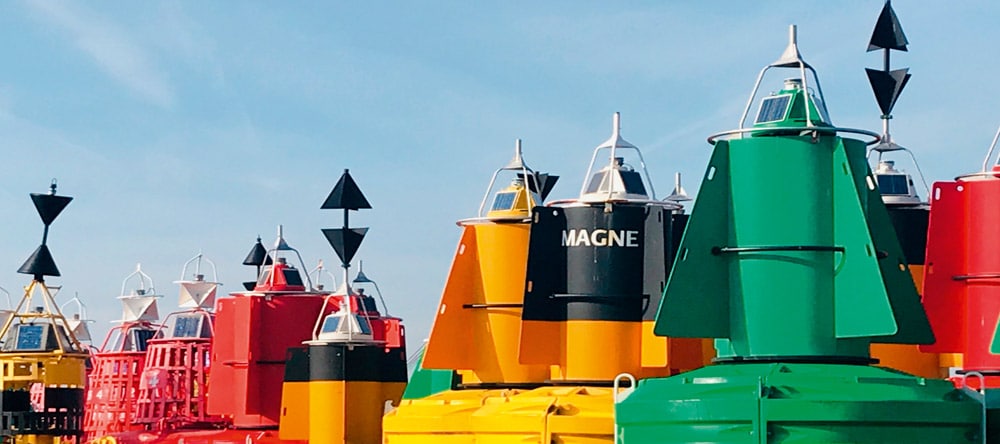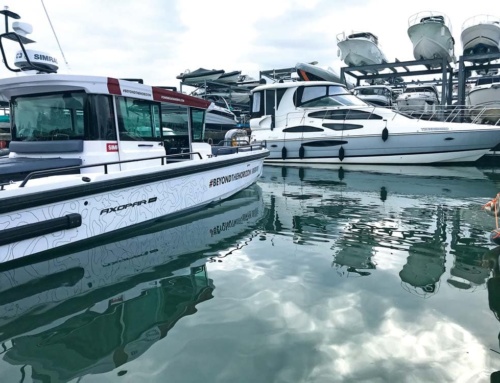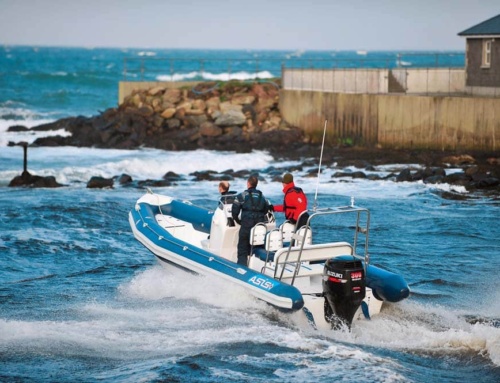In the fourth article in this ‘Back to Basics’ series, Paul Glatzel focuses on the key navigation elements of buoyage and pilotage …
Previously, we’ve looked at the subjects of the COLREGs, charts and tides. The final elements of navigation to look at are the buoys we see when we’re afloat and how we then use our understanding of charts, tidal information and navigation features such as buoyage to make a safe passage.
The buoys we tend to see most often afloat are the red and green floating buoys or posts – these are ‘lateral marks’. Lateral marks are there to show us where channels are. While it’s easy to think they show us where it is safe to go, it’s actually not that simple as it all depends on the draught of your vessel, the tidal height and the ‘charted depth’ (the minimum depth at the lowest tides) in the channel. If a channel shouldn’t necessarily be considered ‘safe’ just because it’s buoyed, then equally going ‘outside’ the channel isn’t necessarily ‘unsafe’. It’s all about checking your charts and making an informed decision.
A good general rule is: the bigger the buoy or post, the bigger the vessel the buoy is aimed at. Large floating buoys = big ships in big channels; small floating buoys = small boats and smaller channels. The progression continues – coloured posts with top marks, posts with no top marks, etc. (Hint: Note the different shapes – red ‘cans’ and green ‘cones’.)

Image: RYA Powerboat Handbook
So if we now ‘get’ buoyage, the question is how we put this knowledge to work and plan to get from ‘A to B’. As we start off as a powerboat, ‘A’ will be a marina or slipway while ‘B’ will be a few miles away through a harbour or estuary to a decent anchorage or perhaps another marina. As we gain experience, we may want to consider going further afield and ‘B’ may be 10–20 miles along the coast. The techniques we use to plan each of these trips will vary, but the core principles are the same. The first element of our plan is actually deciding whether it’s safe to go or not. This article isn’t going to delve into that subject in any depth, but the broad premise is: only make a passage if you are sure that everything lines up – weather, your capability, the crew’s capability, the boat’s capability and so on.
Two other types of buoy are very common – cardinals and special marks.

Cardinal marks are used to identify where safe water is. For example, for a north cardinal, the safe water is to the north of the mark. You can see here the different layouts of each of the marks. (Hint: The triangles on the top mark point to where the black on the buoy is.) Cardinals may be used to mark shallower areas, turn points in channels or even joins in channels. Knowing what a cardinal is used for is useless, though, unless you know where you are relative to the buoy. Historically, this was about using a compass and a chart, but a chartplotter is just fine as long as you make sure you understand what you are looking at.
To leave our port or harbour, it’s helpful to produce what’s called a ‘pilotage plan’. A pilotage plan is a plan that identifies the key features that you are going to see as you exit your harbour or estuary, and the process of producing one helps you to learn about, and understand, the trip you are about to make. Items such as buoyage, structures, buildings ashore and even depths can all be used to help you exit safely. Using your chartplotter also works well, and you could enter a ‘route’ to follow. The danger with doing this through a harbour or estuary, though, is twofold: firstly, that the concentration needed to follow a route in a potentially busy area may draw attention away from what’s going on outside your boat, thus risking a collision situation; and secondly, that in the narrow channels of a port or harbour, any element of GPS-related error could inadvertently lead you outside the channel and perhaps aground. Using a chartplotter makes total sense, however, and being able to glance often at an updating image of where you are is a massive benefit. It’s all about having a multilayered approach to navigation.

Special marks are used for lots of things – to mark speed limits, jet ski and waterski areas, yacht racing marks, sewage outfalls, wrecks and so on. They can be any shape, are yellow and might have a top mark – the ‘X’ you see. Images: RYA Powerboat Handbook
Looking at how we put together a pilotage plan, there are a few ways of doing this, and as our methods of navigation evolve, so too does the approach to creating a pilotage plan.

Traditional style of pilotage plan drawn from a paper chart. Clear notes on the key information needed to traverse this harbour. Always used in conjunction with a chart.
Venturing further will require slightly different techniques, but again, electronic charts can do lots of the heavy lifting for you. Apps like savvy navvy can plan a route from A to B, but it’s essential that you as the skipper check what has been created as apps can get it wrong and you remain totally responsible for the safety of the passage whoever did the hard work for you.

With electronic charts, new methods are evolving. Here a screenshot from the tablet-based app ‘savvy navvy’ has been annotated with the same sort of key features to help focus on the key elements of the passage. Image: savvy navvy
In summary, understanding the buoys you see afloat and working out what they represent is key to safe navigation. Taking this knowledge and marrying it to what we know about charts and tides allows us to plan a passage. There’s no absolute right or wrong in terms of how you prepare a plan, so take the time to experiment and find a way that works for you and the kit that you have.

Here savvy navvy has plotted a route from the end of our pilotage plan leaving Poole to enter the western Solent.
Take time to review the route and place turn points (known as ‘waypoints’) at notable features if at all possible to verify that your passage is progressing to plan. In this example, you can see at waypoint B that the headland will be to port of you and slightly behind as you change heading. Image: savvy navvy
Keep safe and have a great time afloat!
Read the full Back to Basics Series:
Back to Basics – Part 1: The ‘COLREGs’
Back to Basics Part 2: Interpreting your Charts and Chartplotter
Back to Basics Part 4: Buoys and Pilotage
Back to Basics Part 5: Boat Handling
Back to Basics Part 6: Marina Handling
Back to Basics Part 7: Dealing With Emergencies
Learn more in our Tuition Section










